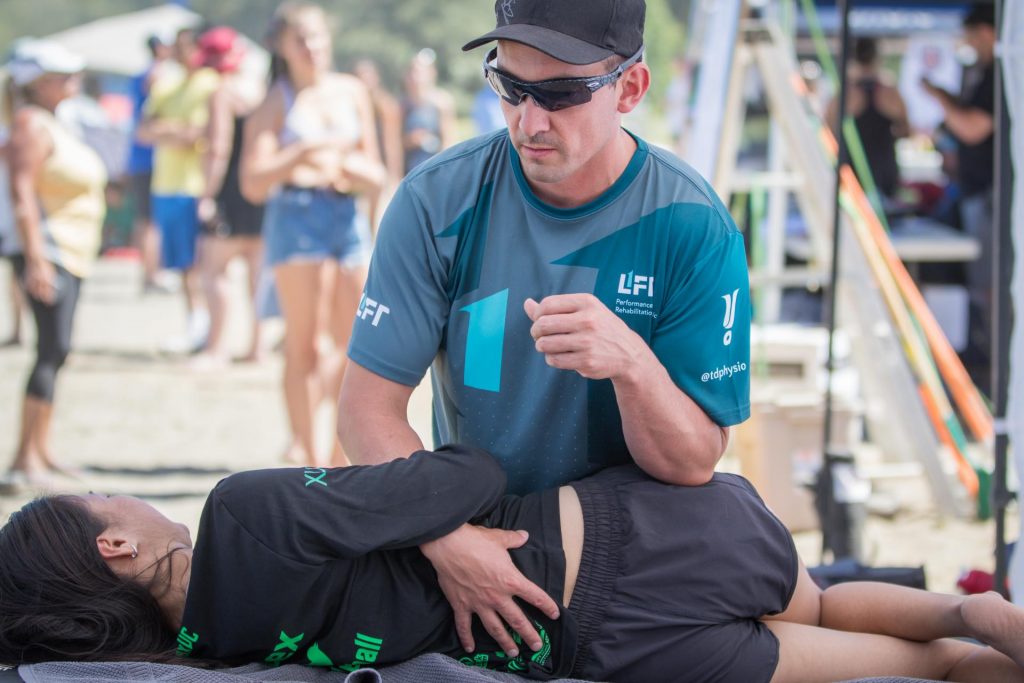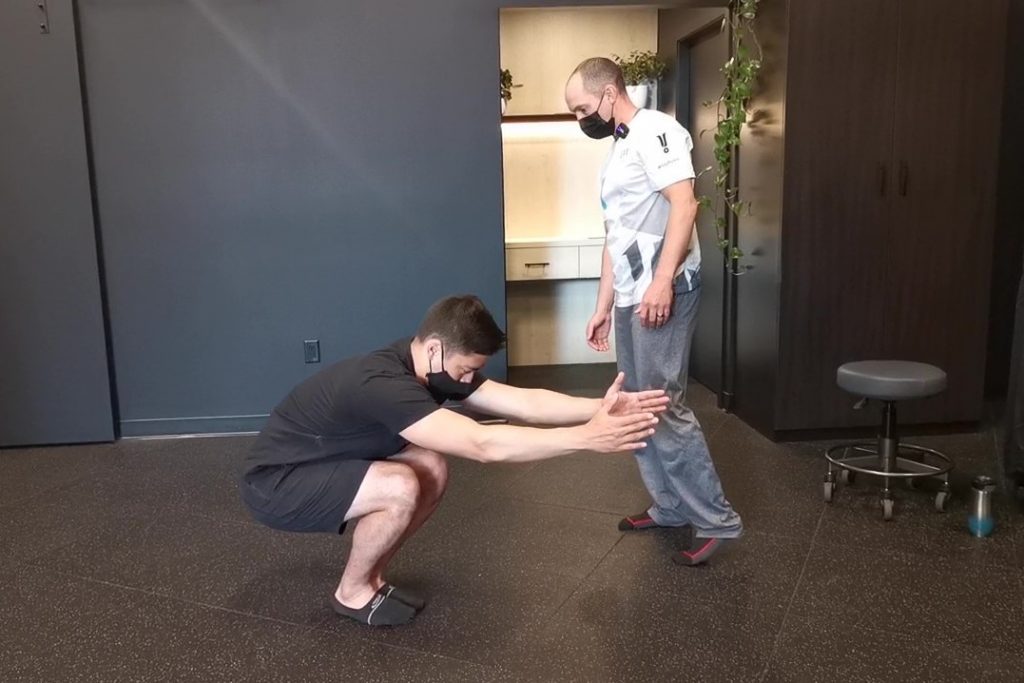Beat Hip Pain and Improve Performance With Lift Clinic's Vancouver Physiotherapy, Chiropractic, and RMT Massage Therapy Team.
Ok, let’s talk about the hip! What to expect from rehabilitating your hip pain with Lift Clinic, and how our clinicians can help level-up your hip function and performance.
Whether you're here for hip performance...
“Travis was instrumental in getting me ready for events in 2015. Without his treatments, I wouldn’t have been able to do the Tough Mudder at Whistler or the Propera Valley GranFondo. Travis takes time to understand the issues and not only rehabs the areas, he provides on-going exercises to prevent future issues.”
...or for hip pain rehabilitation, we're ready to help.
“Highly recommend Henry Young. I have been seeing Henry Young for the last month and he has been extremely helpful in assisting with relieving my lower back pain and hip flexibility. I will continue to see him to gain more core strength and lower back strength.”
Take a sneak peek into how we work with the Hips at Lift Clinic and help relieve hip pain.
Physiotherapist Travis Dodds shares how clinicians at Lift Clinic can treat your hip to eliminate pain and optimize performance.
What's it like to rehabilitate your hip pain with Lift Clinic?
Many things around your hip can be causing your pain. Your hip joint is really neat because it’s a ball-and-socket joint, with nearly 360 degrees of musculature surrounding it, helping to keep everything in place. There is a lot of force transfer and power happening around your hip, so keeping it strong and healthy is important for both performance in sports and everyday life.
At Lift Clinic we strive to provide you with a thorough assessment that incorporates an understanding of your head to toe movement abilities and how these relate to your pain and injury. We believe in helping clients level up movement by addressing root causes of pain.
As a team we train together to help ensure our clinicians know the abilities of their teammates. This is so we can make accurate “passes” when sharing clients, like how elite sports team make passes as they work towards scoring a goal.
We encourage clients to think big picture and help us understand who you are and what’s most important to you. So we like to start by asking questions like this:
What would you be doing right now if your health and function were 100%?
This is a question we want each and every one of our clients to ask themselves before they come in. Every client has their own unique goals and abilities. What’s important to you and what you want to achieve is a fundamental factor in creating your individualized treatment plan. Our aim is to help you overcome pain and improve performance so that you can keep doing what you love!

Why is it important to seek treatment as soon as possible for Hip Pain?
Your hip is such a complex area with so many potential causes of pain. We want to assess what the root cause of your pain is, as well as get a specific diagnosis of what’s causing your symptoms locally. The sooner we can do that, the sooner we can get you on track to eliminate your pain and address that root cause.
What can I do to prepare for my appointment?
- come with flexible clothing – shorts and a t-shirt/tank top are generally best
- be prepared for an assessment that will look at the hip, but also the whole body, so we can understand how your hip and body affect one another, assess whole body movement patterns, and also look for signs of whether or not grumpy peripheral nerves, low back or vestibular systems may be involved in your issue
- take time to reflect on how this is affecting your function – are you limiting activities? strength, flexibility or cardiovascular exercise? is this hip injury affecting your mental health (stress, anxiety, depression?), ability to enjoy yourself, your mood, or your sleep?
- reflect on: what would you be doing if you were 100%
Take the first step to eliminating your hip pain and achieve your performance goals!
Hip Pain and Rehabilitation FAQs
There are many muscles and ligaments surrounding the hip. Your hip is a powerhouse, but even minor pain or mobility issues can break down your form and affect your performance. Here are a few issues we see at the hip:
- groin strains
- femoracetabular impingement
- hip flexor strains
- hip abductor strains
- labral injuries
- gluteal tendinopathy
- piriformis syndrome
- hamstring strains
- SI joint injuries
- disc injuries with hip referrals
- osteitis pubis
- hip arthritis
- IT band pain
- hip fractures
- trochanteric bursitis
It really comes down to the assessment: what we see, what your injury is, how long your pain has been around. If your pain has been persisting for a number of years, it’s more likely to take a while to sort out all the root causes and influences – otherwise you’d have figured it out and healed up by now! Whereas acute injuries like hip flexor strains tend to heal up according to a more prompt and predictable timeline. You won’t really know until we assess you and work out a plan of care to get you working towards 100%. In your first session, we’ll do our best to diagnose and offer an opinion on how long it will take to heal with or without treatment.
Sometimes what you need to work on would be obvious, like working with things close to the hip:
- core stability
- fixing pelvic tilt
- mobility training
- proper warm up and cool down with activity
- proper running, jumping and strength training technique
- poor motor control (muscle activation), due to irritability of the low back and associated nerves that go to the hip being grumpy
- limited thoracic rotation that is causing abnormal mechanics when you walk or run
- poor foot position and control that is making your hip work harder to compensate
So again, it all starts with a detailed, personalized assessment.
The bulk of clients with hip pain start with chiropractic or physiotherapy to get that really detailed assessment. If you feel a lot of tightness and need to get your hip loosened up, starting with massage therapy is great too. You can also start with strength coaching if your goal is to improve sport performance or build habits for overall fitness while addressing your pain.
A key aspect of Lift Clinic is that we work best as a team. What’s great is that we can share notes and collaborate on treatment plans to best help clients meet their goals. The most important thing is to really figure out what the root cause of your pain is, and 2 heads (or more) are better than 1.

What is optimal hip function and how does this help your performance and longevity?
Do you have good range of motion and strength in your hips? Can you produce powerful forceful movements that involve the hips? This is what we look for when assessing your hip function.
Try these:
- With your knees straight, bend over at your hips and try to touch your toes.
- With your feet together, squat down as far as you can, aiming to have your hands beside your feet.
- Facing away from a mirror with your feet together, try to rotate your shoulders until you can see the far shoulder in the mirror. Try this on both sides. Can you see your far shoulder?
If you can do this with ease and with the same results on both sides pain-free, congratulations! You have excellent hip mobility. Next we might look at strength or performance assessments.
If you don’t pass the above tests, we can quickly perform an assessment to determine the root cause of your movement limitations, so that you can spend your time and efforts fixing the most important issues.
Using assessments such as these, we aim to identify your limitations or pain-evoking movements, figure out where that deficit or pain is coming from, and use a wide range of therapeutic techniques to improve your function. We do this by taking a broader point-of-view and looking at your body as a whole, determining if you have all the building blocks in place to support your hip function. By bulletproofing your hip, you will be able to take your performance to the next level and move better in the long run.
Whether it’s sprinting or long distance running, the muscles surrounding your hips are what power your stride. With sprinting, explosive hip extension by the gluteals propel you forward at incredible speed. With long distance running, having stable hips with supporting muscles that won’t fatigue are essential to prevent pain. Keeping your hips flexible, even, and stable is the basis of good running form. Even small improvements can lead to great strides in your running performance (pun intended).
When you jump, that explosive push off the ground needs to be as efficient and stabilized as possible, like a well oiled machine. With so many moving parts and structures contributing to the hip, your muscle actions need to be well coordinated to produce the best results. One weak link in the chain can radiate out into other areas and as a result, your form and performance suffers. If you have hip pain, or pain anywhere really, that’s your body’s way of telling you there’s something not quite right. That’s where we come in!
With all that power and force transfer coming from your hip, small amounts of pain or limited mobility can affect your training. We see this a lot with movements like squats and lunges, where you are loading heavier and your knees might start to cave in.
Increasing your hip strength with physiotherapy or strength and conditioning, or getting your hip mobilized with chiropractic or massage therapy can help you move better. Small adjustments in your form or getting just a few degrees more range of motion can truly boost your training progression and get you to your goals.
Your hip strength and mobility are so vital in providing a solid base for movement. Changing direction explosively to evade a defender, squatting a new personal record, placing first in the 100 meter sprint, all of these accomplishments are in no small part thanks to your hips. Optimal hip function means you can transfer maximum force from the ground up, allowing you to play and perform your best!
How can Lift Clinic help you optimize your hip performance and achieve your goals?
Your hip is an area where you have an incredible amount of power and force transfer. We see a lot of clients with fundamental strength and mobility problems that are really limiting what they can do in the gym and on the field, etc. If you find your knees caving in, or can’t seem to explosively change direction, this may be due to issues coming from your hip.
